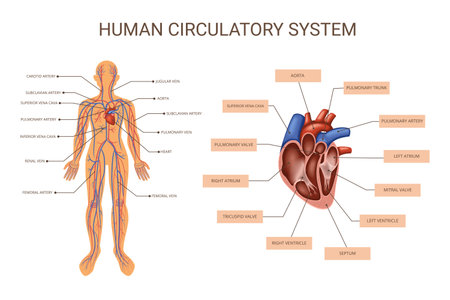1. Understanding the Basics of Cognitive Behavioral Therapy (CBT)
Cognitive Behavioral Therapy, often called CBT, is one of the most popular forms of talk therapy in the United States today. Its a practical approach to mental health that focuses on helping people understand how their thoughts, feelings, and behaviors are connected. Instead of just talking about your problems, CBT teaches you skills to actively manage them.
What is CBT?
CBT is a short-term, goal-oriented type of psychotherapy. It works by identifying negative thought patterns and beliefs that influence your emotions and actions. Through guided sessions with a trained therapist, you learn to replace these unhelpful thoughts with more realistic and positive ones. This process can lead to changes in behavior and improvements in how you feel day-to-day.
The Origins of CBT
CBT was first developed in the 1960s by Dr. Aaron Beck, an American psychiatrist who wanted to create a more effective way to help people with depression. He noticed that many people’s emotional struggles were linked to distorted thinking patterns. Over time, CBT has evolved and grown into a widely accepted treatment for many mental health conditions, including anxiety, depression, PTSD, and more.
Why Is CBT So Popular in the U.S.?
There are several reasons why CBT has become a go-to therapy option across America:
| Reason | Description |
|---|---|
| Evidence-Based | CBT is backed by extensive scientific research showing it’s effective for many mental health issues. |
| Short-Term | Treatment typically lasts weeks to months—not years—making it accessible for busy lives. |
| Skills-Focused | Clients learn real-life tools they can use outside therapy sessions. |
| Adaptable | CBT can be done individually, in groups, or even online—offering flexibility for different needs. |
Common Uses of CBT in American Culture
In the U.S., CBT is used in hospitals, private practices, schools, and even through telehealth platforms. People from all walks of life—students dealing with stress, veterans coping with trauma, or professionals managing work anxiety—can benefit from this structured approach. Insurance companies also tend to cover CBT because it’s proven to work efficiently.
2. Core Principles Underlying CBT
Cognitive Behavioral Therapy (CBT) is built on a few core ideas that make it effective for many people in the United States. At its heart, CBT focuses on the way our thoughts, feelings, and behaviors are all connected. Understanding these relationships can help us make positive changes in our daily lives.
The Thought-Emotion-Behavior Connection
One of the most important principles in CBT is that what we think affects how we feel and what we do. Sometimes, negative or unhelpful thoughts can lead to tough emotions and behaviors that make life harder. When we learn to spot and challenge these patterns, we can start to feel and act differently.
| CBT Element | Description | Everyday Example |
|---|---|---|
| Thoughts | The things we say to ourselves in our minds | “I’ll never do well at work.” |
| Emotions | The feelings triggered by our thoughts | Anxiety, sadness, or frustration |
| Behaviors | The actions we take as a result of our emotions | Avoiding projects or meetings at work |
Automatic Thoughts and Core Beliefs
CBT helps people recognize “automatic thoughts”—those instant reactions that pop up without us even realizing it. These automatic thoughts are often shaped by deeper “core beliefs” about ourselves and the world. For example, someone who believes “I’m not good enough” may quickly think they’ll fail before they even try something new.
Why This Matters in Daily Life
By understanding these connections and patterns, Americans can develop practical skills for handling stress, anxiety, depression, or other challenges. CBT teaches that small shifts in thinking can lead to big changes in mood and behavior—empowering people to break out of negative cycles one step at a time.

3. Essential Techniques Used in CBT
Cognitive Behavioral Therapy (CBT) relies on a set of practical techniques that help people change unhelpful thoughts and behaviors. Here’s an overview of some of the most common methods used by therapists across the United States.
Cognitive Restructuring
This technique helps individuals identify and challenge negative thought patterns. Therapists guide clients to recognize automatic thoughts that may be inaccurate or harmful, then work with them to replace these with more balanced and realistic ones. For example, someone who often thinks “I always mess things up” learns to question this belief and consider evidence that contradicts it.
Steps in Cognitive Restructuring
| Step | Description |
|---|---|
| Identify Negative Thought | Notice when you have an unhelpful thought. |
| Examine the Evidence | Look for facts that support or refute your thought. |
| Challenge the Thought | Ask yourself if there’s another way to view the situation. |
| Replace with Balanced Thought | Create a more accurate or helpful statement. |
Exposure Therapy
Exposure therapy is a powerful tool for treating fears, phobias, and anxiety disorders. Instead of avoiding what makes them anxious, clients are gradually exposed to these triggers in a safe and controlled way. Over time, this process helps reduce fear and build confidence. For instance, someone afraid of public speaking might start by talking in front of a friend, then move up to larger groups.
How Exposure Therapy Works
- Create a hierarchy of feared situations (from least scary to most scary)
- Start with easier tasks and gradually work toward more challenging ones
- Practice regularly until anxiety decreases at each step
Behavioral Activation
This approach is especially helpful for depression. It focuses on encouraging people to engage in activities they enjoy or find meaningful, even if they don’t feel like it at first. The idea is that doing positive activities can help lift mood over time. A therapist might help someone schedule regular walks, hobbies, or social time into their week as part of treatment.
Examples of Behavioral Activation Activities
| Type of Activity | Examples |
|---|---|
| Physical | Walking, biking, gardening |
| Social | Calling a friend, joining a club, family dinner |
| Pleasurable | Listening to music, cooking, reading for fun |
| Achievement-Based | Completing chores, finishing homework, setting small goals |
The Takeaway on CBT Techniques
Cognitive restructuring, exposure therapy, and behavioral activation are all key components of CBT. These practical tools are designed to help people break free from negative cycles of thoughts and behaviors—one manageable step at a time.
4. How CBT Is Practically Applied in Everyday Life
Cognitive Behavioral Therapy (CBT) isn’t just something that happens in a therapist’s office—it’s a set of practical tools Americans use every day to handle real-life challenges. Whether it’s dealing with anxiety at work, managing stress from family responsibilities, or tackling feelings of depression, the principles and techniques of CBT can make a real difference in daily life. Here’s how:
Common CBT Techniques Used by Americans
| CBT Tool | Everyday Example | How It Helps |
|---|---|---|
| Thought Records | Jenna writes down her anxious thoughts before a big presentation at her job. | Helps Jenna identify unrealistic fears and replace them with more balanced thinking. |
| Behavioral Activation | Mike schedules activities he enjoys, like jogging or meeting friends, when he feels low. | Keeps Mike engaged and lifts his mood by increasing positive experiences. |
| Exposure Exercises | Sara gradually faces her fear of driving by starting with short, safe trips around her neighborhood. | Reduces Sara’s avoidance and builds confidence over time. |
| Problem-Solving Skills | David breaks down his overwhelming workload into smaller tasks and prioritizes what to do first. | Makes large problems feel more manageable and reduces stress. |
| Mindfulness Practices | Ashley uses guided breathing exercises during her lunch break to calm her mind. | Helps Ashley stay present and lowers everyday stress levels. |
Real-World Scenarios: How CBT Fits American Lifestyles
Anxiety at Work: Many Americans experience performance anxiety before meetings or presentations. By using thought records, they challenge catastrophic thinking (“I’ll mess up and get fired”) and replace it with realistic thoughts (“Everyone gets nervous; I can prepare and do my best”).
Managing Depression: When feeling unmotivated, people often use behavioral activation by planning enjoyable or meaningful activities—even simple ones like taking a walk or calling a friend. This helps break the cycle of inactivity.
Coping with Stress: Parents juggling multiple responsibilities might use problem-solving skills learned in CBT to create actionable plans for busy days, reducing overwhelm.
Dealing with Social Anxiety: Exposure exercises are commonly used for social fears. For example, someone might start by saying hello to coworkers, then work up to participating in group conversations over time.
The American Approach: Flexibility and Self-Reliance
CBT’s practical nature matches the American cultural value of self-reliance. People appreciate being able to learn strategies they can apply on their own whenever challenges arise. With the rise of online resources and mental health apps, many Americans practice these tools independently between sessions or even without formal therapy. This flexibility allows CBT to fit easily into busy lives—at home, at work, or on the go.
5. What to Expect during a CBT Session
The Typical Structure of a CBT Session
If you’re new to Cognitive Behavioral Therapy (CBT), it helps to know what your sessions might look like. Most CBT sessions follow a predictable structure, making it easier for you to feel comfortable and prepared. Here’s a simple breakdown:
| Session Part | What Happens |
|---|---|
| Check-In | You and your therapist talk about how things have been since your last session, including any major events or changes in mood. |
| Set the Agenda | Together, you decide on the main topics or problems to focus on during the session. This step keeps things organized and makes sure your concerns are addressed. |
| Review Homework | Your therapist will ask about any exercises or tasks you tried between sessions, exploring what worked and what didn’t. |
| Work on Current Issues | You’ll use CBT tools and techniques to work through specific thoughts, feelings, or situations that are troubling you. |
| Plan for Next Time | You wrap up by summarizing key takeaways and deciding on homework or goals for the week ahead. |
The Collaborative Role: Therapist and Client as Partners
In CBT, therapy is a team effort. The therapist isn’t just telling you what to do—they’re working alongside you. You bring your experiences and insights; they bring their expertise in CBT techniques. Think of your therapist as a coach: guiding, supporting, and encouraging you, but not doing all the work for you. Your active participation is crucial for success.
How Collaboration Works in Practice
- Goal Setting: You set therapy goals together so they match your real-life needs.
- Feedback: You share honestly about what’s helping or not helping, shaping how future sessions go.
- Practice: You try out new skills both during sessions and at home with “homework.” Your efforts help guide the direction of therapy.
Tips for Making the Most Out of Your CBT Sessions
- Be Open: Share your thoughts and feelings honestly—even if they seem difficult or embarrassing. Therapists are trained to listen without judgment.
- Stay Curious: Ask questions if you don’t understand something. The more you know about how CBT works, the better results you’ll get.
- Do the Homework: Practicing skills outside of sessions helps reinforce what you learn and speeds up progress.
- Track Your Progress: Keep a journal or notes about what you notice between sessions—this makes it easier to spot patterns and successes.
- Give Feedback: Tell your therapist what’s working and what isn’t so they can adjust their approach to fit your needs.
Your Comfort Matters
If something feels uncomfortable during a session, let your therapist know. Therapy should be a safe space where you feel respected and heard. Remember: Every session is a step forward in building new habits and ways of thinking that support your well-being.


